Track Categories
The track category is the heading under which your abstract will be reviewed and later published in the conference printed matters if accepted. During the submission process, you will be asked to select one track category for your abstract.
Oceanography is the investigation of the sea and all its unpredictable associations with the planet. An oceanographer is a unique sort of researcher who examines the sea, such as the chemistry of the of ocean water, the geology related with the sea, the physical developments of the Ocean water. Oceanography, as the name suggests, is that control of data that is bothered with the seas and consolidates inside its augmentation the limit line or an outer limit of seas, of their enormity and significance, the physical constituents and chemical quality of their waters, marine biological life, and the sort of advantages found there.

- Track 1-1 Marine Biology
- Track 1-2 Environmental Oceanology
- Track 1-3 Marine Sciences
- Track 1-4 World Ocean
- Track 1-5 Palaeoceanography
Marine Biology is the methodological investigation of marine life, living beings in the ocean. Given that in biology numerous phyla, families and genera have a few species that live in the ocean and others that live ashore. Marine Biology classifies the species dependent on nature rather than on taxonomy.
The importance is on fundamental rules that assist us to comprehend the procedures that shape life in marine environments. This point presents marine organisms and the physical and biological processes that influence them. At first it starts with an examination concerning the geologic procedures behind the arrangement of ocean basins, the causes and maintenance of currents and ocean circulation, and the physical elements affecting essential profitability in marine environments.
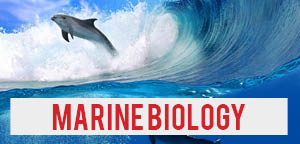
- Track 2-1 The Sea Floor
- Track 2-2 Fundamentals of Biology
- Track 2-3 Species, Genetic Variation, Evolution And Biogeography
- Track 2-4 The Science of Marine Biology
- Track 2-5 Marine Drugs
- Track 2-6 Chemical And Physical Features Of Seawater And The World Ocean
Physical oceanography is the investigation of physical conditions and physical procedures inside the oceans, particularly the movements and physical properties of sea waters. In this few areas, oceanography is divided. Others include biological, chemical and geographical oceanography. And it might be subdivided into graphic and dynamical physical oceanography.
In physical oceanography, Oceanographer employ a wide variety of scientific aptitudes and methodologies, from the most distinctive to the most calculated, to clarify maritime movements while, theoreticians and modelers clarifies the observed stream and the arrangement of temperature and saltiness conveyances in the Ocean. This work can include the development of the least complex scientific models as a method for clearing up some new, rapid process.
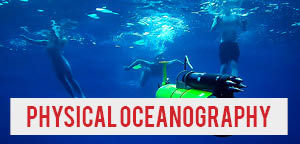
- Track 3-1 The Oceans And Basic Equations
- Track 3-2 Boundary Conditions At The Air-Sea Interface
- Track 3-3 Geostrophic Flow
- Track 3-4 Barotropic Ocean Circulation
- Track 3-5 General Circulation Of A Baroclinic Ocean With Bottom Topography
- Track 3-6 Inertial Motions
Aquaculture is the cultivating of aquatic animals or plants, including reproducing, rising and harvesting up in a wide range of water situations in controlled conditions. It is utilized to deliver sustenance and business items, re-establish and make more advantageous environments and reconstruct compromised or imperilled species populations. There are two sorts of aquaculture – Marine and freshwater. Fishery is an element occupied with raising or reaping fish. Individuals included, species or sort of fish, region of water or seabed, technique for fishing, class of boats, purpose of the activities or a combination of the foregoing features.

- Track 4-1 Aquatic Biotechnology
- Track 4-2 Aquatic Pathology
- Track 4-3 Aquaculture Biology
- Track 4-4 Aquaculture Economics
- Track 4-5 Aquaculture Production
Climate change is an adjustment in the measurable dissemination of climate designs when that change goes on for an all-encompassing period. Climate change may allude to an adjustment in normal climate conditions caused by variables, for example, biotic procedures, varieties in sun powered radiation gotten by Earth, plate tectonics, and volcanic ejections. Furthermore, certain human exercises have been recognized as essential drivers of progressing environmental change, regularly referred to as a world-wide temperature improvement.
Scientists effectually work to realize past and future climate by utilizing perceptions and hypothetical models. The elements that can shape climate are called atmosphere constraining. These can be either "inner" or "outside". Internal forcing mechanisms are natural processes inside the climate system itself. External forcing mechanisms can be either anthropogenic caused by individuals.
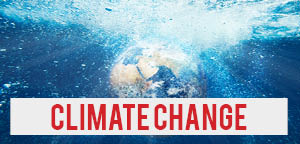
- Track 5-1 Climate Hazards
- Track 5-2 Global Warming Effects And Causes
- Track 5-3 Ocean & Climate Change
- Track 5-4 Indications Of Climate Change
- Track 5-5 Climate Change Economics
A satellite is an object that circles or spins around some other protest. Satellites can circle the Earth a few times each day. By setting instruments on a satellite, an oceanographer can get information from everywhere throughout the world in a short measure of time. These instruments can quantify the temperature of the ocean surface, the extent of the water, the speed of the draught over the water and numerous different things.
Satellites can also take estimations over the whole Earth's surface in few days. Subsequently, Oceanographers are readily available to better study phenomena, which influence whole seas or even the whole planet. This makes satellite estimations perfect for researchers who consider the Earth's atmosphere.

- Track 6-1 Remote Sensing Satellites and GIS
- Track 6-2 Satellite Communication
- Track 6-3 Marine Life And Ecosystems
- Track 6-4 Satellite Altimetry
- Track 6-5 Ocean Circulation
Marine Engineering is the order of applying engineering sciences, and can incorporate different field as mechanical engineering, electrical engineering, electronic engineering and Computer Science, to the improvement, structure, task and upkeep of watercraft motivation and on-board frameworks and oceanographic technology, not constrained to simply power and impetus plants, machinery, piping, automation and control systems etc., Marine engineers oversee apparatus and the frameworks of ships.
The principle goal of Marine Science Conferences is to total the prominent researchers, scientists and academicians from each field of Oceanography, Marine sciences, Marine biology and indicated related zones to construct a stage for the discussion and strong exchange of the mutual thoughts and the advances towards Marine Oceanography.

- Track 7-1 Equipment And Manufacturing
- Track 7-2 Maritime Management
- Track 7-3 Emission And Exposure During Ship Recycling
- Track 7-4 Port And Marine Operations
- Track 7-5 Ship Design And Marine Technology
Oceans around the globe are getting to be debased. Evidence shows that human exercises, including extreme fishing the world over, are adjusting ocean ecosystems beyond their common state. As per various scientific investigations, fish, shellfish, and other vital species are declining in numerous spots. These progressions are weakening the ocean's ability to give food, protect livelihoods, keep up clean water, and recuperate from natural hazards like severe hurricanes.
A recent study which has mapped the aggregate human effect on the oceans for the first time has uncovered that the image is far more regrettable than the researchers imagined. 40% of the world's oceans have been vigorously influenced by human exercises, including fishing, coastal improvement and pollution from shipping. The most extremely influenced zones are the North Sea, South and East China Seas, Caribbean, Mediterranean, Red Sea, the Gulf, the Bering Sea, the East Coast of North America and the Western Pacific.
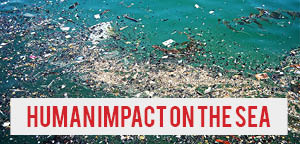
- Track 8-1 Human Effects On The Marine Environment
- Track 8-2 The Fishery Stock And Its Variability
- Track 8-3 Fisheries Impact And Management
- Track 8-4 Over-exploitation Of Whales And Other Types Of Degradation
- Track 8-5 Environmental Impacts
Marine Ecology is the logical investigation of marine-life area, populaces, and communications among life forms and the encompassing condition including their abiotic (non-living physical and substance factors that influence the capacity of creatures to endure and imitate) and biotic elements (living things or the materials).
Since our reality, we have relied on the sea for food, dissipate dumping and so on because of the contribution today the marine environment has arrived at an imperilled state killing many animal varieties and their natural surroundings. Researchers additionally uncovered that because of expanding carbon dioxide gas in the environment result in more absorption of carbon dioxide in seas creating acidification to the ocean science.
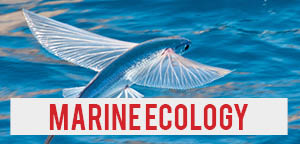
- Track 9-1 Behavioural Ecology
- Track 9-2 Global Ecology
- Track 9-3 Fish Ecology
- Track 9-4 Landscape Ecology
- Track 9-5 Physiological Ecology
Hydrology, scientific discipline concerned about the waters of the Earth, including their event, dissemination, and circulation by means of the hydrologic cycle and communications with living things. It manages the distinctive parts of phenomena like Hydrometeorology, Hydrometry, Hydrography and Groundwater hydrology.
Hydrologic investigation is important in the advancement, the executives, and control of water assets. Its applications are complex and incorporate water system frameworks advancement, surge and land-erosion control, waste-water transfer and treatment, contamination decrease, recreational utilization of water, fish and untamed life conservation, hydropower generation, and the plan of pressure hydraulic structures.
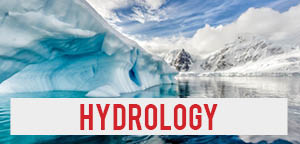
- Track 10-1 Hydrologic Modelling
- Track 10-2 Soil Erosion And Sediment Transport
- Track 10-3 Climate And Glaciers
- Track 10-4 Hydrologic Extremes And Natural Hazards
- Track 10-5 Climate Change Impact On Hydrology And Water Resources
Coastal Oceanography is a comprehension of waterfront and estuarine procedures, concentrating on their geography and water course, with a short outline on how these shape chemical and biological systems.
The Coastal Oceanography Group focuses on the territorial place-based research along the north coast zone of California, exploiting the one of a kind sea upwelling zones, and in relatable districts around the world. With new as well as continued efforts of the researcher and modelers, and with different financing for this exploration, the Coastal Oceanography Group has had a significant consequence on our comprehension of coastal processes at both the basic physical oceanography.
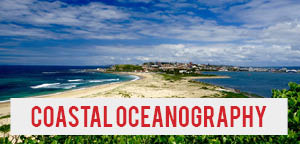
- Track 11-1 Ocean Observing System
- Track 11-2 Coastal Structure
- Track 11-3 Global And Climate Change
- Track 11-4 Nearshore Oceanography And Hydrodynamics
- Track 11-5 Larval Dispersal And Biological Oceanography
Marine Geology or geographical oceanography is the investigation of the history and structure of the sea floor. It includes geophysical, geochemical, sedimentological and paleontological examinations of the ocean floor and coastal zone. Marine geology has solid connections to geophysics and to physical oceanography.
Marine geological examinations were of extreme significance in giving the basic proof to ocean floor spreading and plate tectonics. The deep-sea floor is the last basically unexplored frontier and point by point mapping in help of both military (submarine) targets and monetary (oil and metal mining) destinations drives the exploration.
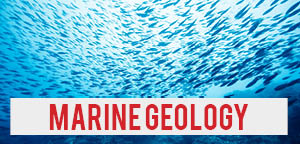
- Track 12-1 The Interaction Of Sound With The Seafloor
- Track 12-2 Geo-acoustic Parameters Of Sediments And Rocks
- Track 12-3 Pelagic Sediments
- Track 12-4 The Topography Of The Seafloor
- Track 12-5 The Seafloor Sediments
Marine Pharmacognosy is a sub part of pharmacognosy which is principally worried about the normally occurring substances of therapeutic value from marine.
Marine Pharmacognosy gives a complete record of marine-determined bioactive pharmaceuticals and their potential medical advantages, including antioxidant, anticancer, antiviral, anticoagulant, antidiabetic, antiallergy, anti-inflammatory, antihypertensive, antibacterial, and radioprotective exercises. Additionally, it talks about the sources, separation and cleansing, chemistry, functionality interactions, applications, and modern highlights of an assortment of marine-derived pharmaceuticals.
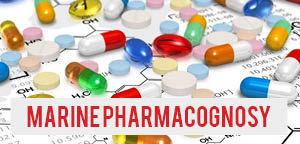
- Track 13-1 Marine Natural Products
- Track 13-2 Bioactive Marine Drugs
- Track 13-3 Marine Sponges
- Track 13-4 Marine Metabolites
- Track 13-5 Marine Microbial Ecosystems
Coral reefs are huge underwater structures made from the skeletons of colonial marine creatures called coral. The coral species that assemble reefs are known as hermatypic, or "hard," corals because they extract calcium carbonate from seawater to make a hard, strong exoskeleton that ensures their soft, sac-like bodies. Different types of corals that are not associated with reef building are known as "soft" corals. These kinds of corals are adaptable organisms frequently looking like plants and trees and incorporate species, for example, ocean fans and ocean whips, as per the Coral Reef Alliance (CORAL), a non-benefit ecological association.
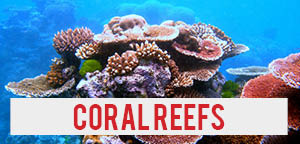
- Track 14-1 The Ecology Of Coral Reefs
- Track 14-2 The Organisms That Build Reefs
- Track 14-3 Kinds Of Coral Reefs
- Track 14-4 Coral Reproduction
Marine Genomics can possibly enhance our ways of life and thriving, and to help with administration and sustainable management of the marine environment. This focus of most genome inquire about is on the nuclear genome, however mitochondrial genomes have been incredibly helpful for the identification of fish species and populaces. Marine microbial accumulations are various and exclusive, and the challenge is to discover what functions are played by these microorganisms. To give satisfactory tools to marine biologists, such as entire genome sequencing and functional genomics, for example, evolutionary tree of marine organisms. Genomics is a highly dynamic research field. Thus, rapid advancements in genomics can tolerate new prospects for applications in marine environment, especially in the regions of Fish genome resources preservation and genetic improvement.
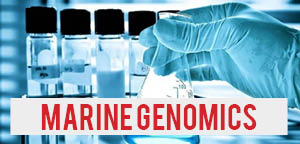
- Track 15-1 Evolution And Development
- Track 15-2 Phylogenomic Analysis
- Track 15-3 Marine Ecological Genomics
- Track 15-4 Comparative Genomics Of Marine
Fish pathology manages the diseases and parasites that impacts fish ordinary living. It considers fish defensive mechanism against infections and its treatment. Areas of interest on pathology is routinely secured incorporate host-pathogen connections, investigations of fish pathogens, pathophysiology, diagnostic methods, treatment, epidemiology, descriptions of new diseases. A few pathogens which can cause fish diseases contain viral infections, bacterial infections, fungal infections, water mould infections, etc., Fish Diseases influence both wild and marine populations, and every year there are some fish ailments and contaminations that can be diffused from fish to water in which they are transmitted to people.

- Track 16-1 Fish Farming
- Track 16-2 Veterinary Parasitology
- Track 16-3 Fish Medicine
- Track 16-4 Fish Disease And Parasites
Marine Ecotoxicology focussed on present day standards of environmental toxicology, from portrayal of the classes of conventional and developing toxins, to the toxicological complications on different biotic components and ecosystem health. Importance will be given to bioindicator organisms, sub-atomic and cell reactions to pollutants, detoxification pathways and components of toxins, utilization of biomarkers, organic and toxicity tests in research, regulating rules and ecological hazard assessment.
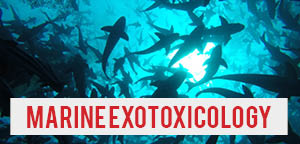
- Track 17-1 Environmental Pollutants
- Track 17-2 Aquatic Ecotoxicology
- Track 17-3 Water Quality
- Track 17-4 Bioaccumulation And Toxicological Effects
- Track 17-5 Ecological Risk Assessment
Marine Pollution threatens the health of our coasts and sea and it comes in a wide range of structures. Marine pollution can mean plastic litter, other litter, for example, glass jugs and jars, oil and synthetic spills or contaminated stormwater channels and river streaming into the ocean.
The impact these have on the marine environment relies upon the kind of contamination, the size of the pollution and where the contamination occurs. Some marine environments and sorts of marine life are more sensitive than others to contaminate. The contamination may harm individual marine life or plants, or it might harm entire networks of various living things.
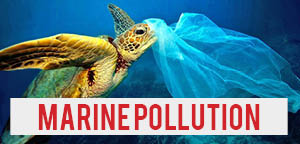
- Track 18-1 Toxic chemicals
- Track 18-2 Coastal & Marine Resources
- Track 18-3 Acidification Of Marine Water
- Track 18-4 Integrated Treatment
- Track 18-5 Beach Closures & Oil Spills
Ocean Biogeochemistry is a part of ocean science dealing the trade and distribution of chemical components and elements among different living and non-living elements inside the ocean itself, and additionally between the sea and its neighbouring surroundings (for example, the climate and the land).
Biogeochemistry additionally alludes to the highlights, (for example, amounts, rates, space or time) of that trade and flow. For example, currently a quarter of carbon dioxide discharged into the air by burning petroleum products is consumed by the ocean, which contains around multiple times more carbon than the climate, the substance conduct of CO2 dissolved up in water, and the demand for CO2 in photosynthesis takes place in the ocean. Through its uptake and storage of Carbon, the ocean moderates a global warming. However, this control can be changed by the impact on changing atmosphere on the parts of the global ocean system that are associated with Carbon biogeochemistry.
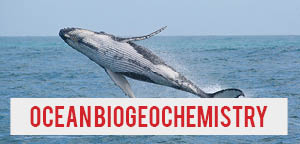
- Track 19-1 Biochemical Bonding
- Track 19-2 Chemical Oceanography
- Track 19-3 Global Change
- Track 19-4 Coastal Biochemistry
- Track 19-5 Mariculture
Marine Biotechnology or blue biotechnology is a zone where items are created from a wide assortment of marine animals and plants. This region additionally incorporates aquaculture, where aquatic organisms are developed in culture and utilized for nourishment, fuel, cosmetics, pharmaceuticals, and different items. In this, aquatic environments are yet not completely studied, and their assets could assume a critical role for different industrial activities.
Diverse research desires could be distinguished in the field on marine biotechnology to demonstrate the vision of the advancements and perspectives for the following couple of years. A key perspective is identified with aquaculture like new procedures will help reproducing of species, in increasing sustainability of production and in improving creature welfare, incorporating changes in food supply, preventive therapeutic measures and utilization of zero- waste recirculation systems. Additionally, aquaculture items will be enhanced to increase best nutritional properties for human health.

- Track 20-1 Marine Drug Discovery
- Track 20-2 Bioremediation
- Track 20-3 Marine Microbial Biotechnology
- Track 20-4 Bio-Sensing Technologies
Ocean Engineering is a field of concentrate that can be uncertainly characterized as an advanced part of the other marine technology studies like maritime engineering or offshore engineering or marine electronic technology. Whenever characterized in detail, it would be referenced as a part of technological studies that deals with the structure and activities of man-made frameworks in the ocean and other marine bodies. The ocean engineers become aware with the insights about the ocean arrangements and the territories of concern for modern navigators and additionally the technological requirements for further building of engineering sensations across the oceans.
Marine Energy or marine power indicates to the energy transported by ocean waves, tides, saltiness, and ocean temperature contrasts. The movement of water on the world’s oceans makes a tremendous store of kinetic energy, or energy in motion. A portion of this energy can be connected to create power to control homes, transport and industries.
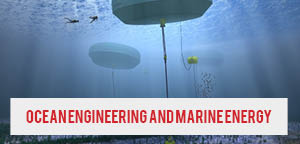
- Track 21-1 Offshore Energy
- Track 21-2 Marine Power
- Track 21-3 Marine Power
- Track 21-4 Wave Dynamics
- Track 21-5 Ocean Energy & Observatories
- Track 21-6 Underwater Technology
The Deep-Sea floor addresses the greatest living space on earth. It ranges from the edge of the territory rack at 200m to the base of the sea. At the edge of the territory rack is the rack break, where the point of the floor increases down the inland incline. Underneath the inland incline lies the territory rise, which has a more gently incline. At around 4,000 meters significance, the ocean bottom is come to and extends completed the ocean bowls at profundities of 5,000 meters all around. Some researchers on board the ship mapped the ocean floor to a depth of 4,000 meters and gathered in excess of 1,000 distinctive marine species, about 33% of which were new to science and half of which indicated bioluminescent quality.

- Track 22-1 Ocean Exploration
- Track 22-2 Deep Sea Biology
- Track 22-3 Marine Biodiversity And Geology
- Track 22-4 Deep Ocean Circulation
Marine Chemistry is the investigation of the chemical composition and processes of the world's oceans. Some of the key procedures studied are the cycling of inorganic and natural carbon; supplements, for example, nitrogen and phosphorus; and trace elements, such as iron. This makes marine chemistry an interdisciplinary field. For instance, study chemical signalling among marine organisms, deterioration in the ocean of cultural heritage, the maritime carbon cycle, ocean acidification and benthic nutrient fluxes.

- Track 23-1 Marine Environment Chemistry
- Track 23-2 Chemical Ecology Of Extremophiles
- Track 23-3 Climate Change
- Track 23-4 Trace Metal Geochemistry
- Track 23-5 Organic Compounds In The Oceans
The benthic zone is the ecological region at the lowest level of a body of water, for example, an ocean, lake, or stream, including the sediment surface and some sub-surface layers. Creatures living in this zone are called benthos and include microorganisms (e.g., microscopic organisms and growths) as well as larger invertebrates, such as crustaceans and polychaetes. Creatures here generally live in close association with the substrate and many are permanently attached to the base.
As the benthic system controls energy in the aquatic ecosystems, considers have been made of the mechanisms of the benthic zone to a better understanding of the ecosystem. Initial research is being made on benthic gatherings to see whether they can be utilized as markers of healthy aquatic ecosystems. Benthic gatherings in urbanized coastal regions are not practically comparable to benthic accumulations in untouched areas.
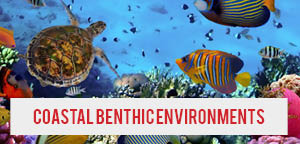
- Track 24-1 The Powerful Interaction Of Invasion And Climatic Change
- Track 24-2 Mangrove Forests
- Track 24-3 Rocky Shores And Exposed Beaches
- Track 24-4 Soft-Sediment Interactions In Protected Inter-tidal Areas
- Track 24-5 The Molecular Sleuth: Invasion Of A Very Aggressive Genotype
Microplastics are little, scarcely visible pieces of plastic that enter and pollute the nature. Microplastics are not a clear sort of plastic, but instead a plastic part that is under five millimetres.
Microplastics can start from a combination of sources including bigger plastic pieces that have broken isolated, sap pellets used for plastic collecting, or as microbeads, which are little, fabricated plastic dots used as a piece of prosperity and excellence items, for instance, a few chemicals and toothpastes. These little particles easily experience water filtration systems and wind up in the ocean and Great Lakes, representing to a potential hazard to maritime life.
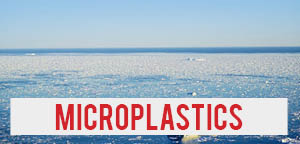
- Track 25-1 Pollutants
- Track 25-2 Plastic Contamination
- Track 25-3 Water Treatment
The study of atmospheric and oceanic sciences incorporates all parts of the atmosphere and physical oceanography, their common interaction, and their connection with space and rest of the earth system. Even though an essential objective is to comprehend the atmosphere and ocean for the purpose of forecasting the climate, atmospheric and oceanic sciences grasps considerably more; movements everywhere, medium, and little scales; past, present, and future atmospheres; air chemistry and quality; clouds and precipitation; and solar based and earthly radiation. In numerous zones, new remote-sensing technology including satellites is utilized to give dissemination circulation patterns at both worldwide and local scales.
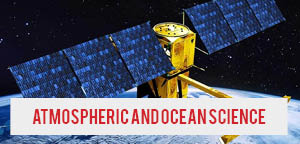
- Track 26-1 Atmospheric Chemistry
- Track 26-2 Ocean Modelling
- Track 26-3 Ocean Dynamics
- Track 26-4 Blue Energy
- Track 26-5 Ocean Ecosystem
Coastal Hazards are physical marvels that uncover a coastal zone to risk of property harm, loss of life and natural degradation. Rapid-onset hazards last over times of minutes to a few days and examples comprise major cyclones combined with high winds, waves and floods or tsunamis made by submarine earthquakes and landslides. Slow-onset hazards raised steadily over longer time periods and models incorporate disintegration and slow immersion. The characteristics of coastal environments pose some extraordinary difficulties to human residence. Throughout the years, human culture has regularly neglected to recognize the hazards related to these dynamics and this has prompted significant disasters and societal disturbance to different degrees.
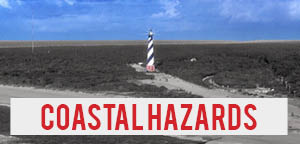
- Track 27-1 Coastal Hazard Management
- Track 27-2 Sea Level Rise
- Track 27-3 Natural Radioactivity
- Track 27-4 Tsunami Hazards
Marine Pharmacology is a part of pharmacology worried about pharmacologically dynamic substances present in sea-going plants and creatures; its goal is to discover and grow new therapeutic agents. The huge development of total population has exploited the current assets for the medications. Also, thus, the medication producers are dependably attentive for new assets to create successful and safe medications for the expanding requests of the total population. About 75% of earth's surface is covered by water but research into the pharmacology of marine organisms is limited.
Marine environment signifies to countless and diverse resource for new medications to encounter major diseases, for example, cancer or malaria. It additionally offers an environmental asset involving an assortment of aquatic plants and creatures. These aquatic organisms are separated for antibacterial, immunomodulator, anti-fungal, anti-inflammatory, anticancer, antimicrobial, neuroprotective, analgesic, and antimalarial assets. They are utilized for new medication advancements all over the world.
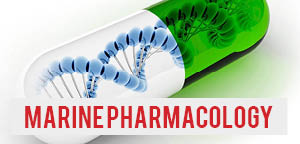
- Track 28-1 Marine Drugs
- Track 28-2 Marine Organism
- Track 28-3 Organic Compounds
- Track 28-4 Marine Microorganisms
Fisheries science is the craft of overseeing and understanding fishes. It incorporates freshwater biology, limnology, marine biology, conservation, ecology, oceanography, economics, and management. Also, it is the kind of industry which joins getting and offering of fishes for nourishment, pharmaceutical and research. Further than marine water fisheries there are fresh water fisheries as well. There are two sorts of waters the new and the bitter. The fresh water bases are water system, repositories, lakes, tanks, lakes. The estuaries, ponds and mangrove swamps establish the salty kind of water. Fisheries science plans and maintain the quality of fish and fishery items.
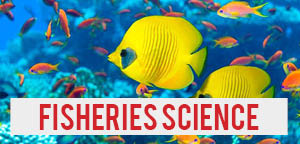
- Track 29-1 Fish Farming
- Track 29-2 Marine Recreational Fisheries
- Track 29-3 Fisheries Management
- Track 29-4 Environmental Sustainability
- Track 29-5 Oceanographic Research Vessels
Aquatic plants are the one that have adapted to living in aquatic conditions (saltwater or freshwater). They are likewise alluded to as hydrophytes or macrophytes. A macrophyte is a sea-going plant that develops in or close water and is either emanant, submergent, or drifting, and incorporates helophytes. In lakes and streams macrophytes give cover to fish and substrate for amphibian spineless creatures, deliver oxygen, and go about as nourishment for some fish and natural life.
Aquatic plants require different changes for living submerged in water. The most widely recognized adjustment is aerenchyma, however floating leaves and finely dissected leaves are also normal. Aquatic plants can just develop in water or in soil that is for all time immersed with water. They are in this way a typical segment of wetlands.
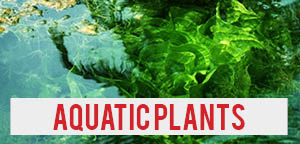
- Track 30-1 Hydrological Condition
- Track 30-2 Eutrophication
- Track 30-3 Phytoremediation
- Track 30-4 Aquatic Environment
- Track 30-5 Phyto Transformation